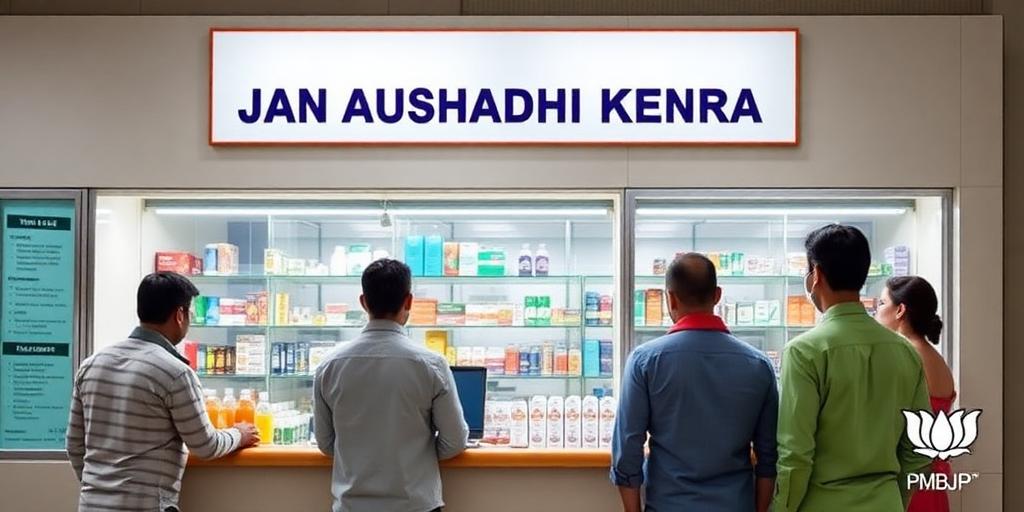The Pradhan Mantri Bhartiya Janaushadhi Pariyojana (PMBJP) stands as a crucial initiative by the Government of India, aimed at providing affordable and quality generic medicines to the masses. As we approach 2025, it is imperative to examine the program's progress, impact, and future strategies.
Background and Objectives
Launched in 2008, the PMBJP seeks to reduce healthcare costs by making generic medicines accessible to all citizens. Generic medicines, which are equivalent to branded drugs in terms of quality, efficacy, and safety, are sold at significantly lower prices. The key objectives of the PMBJP include:
- Ensuring availability of quality medicines at affordable prices.
- Promoting the use of generic medicines.
- Reducing out-of-pocket healthcare expenditure.
- Creating awareness about the efficacy and cost-effectiveness of generic drugs.
Current Status and Achievements
As of 2024, the PMBJP has made significant strides in expanding its reach and impact. Over 10,000 Jan Aushadhi Kendras have been established across the country, providing access to more than 1,800 medicines and 280 surgical items. These Kendras operate under strict quality control measures to ensure that the medicines meet the required standards.
The program has led to substantial cost savings for patients. It is estimated that citizens have saved over ₹20,000 crore since the inception of the scheme. This has significantly reduced the financial burden on families, especially those with chronic illnesses requiring long-term medication.
Challenges and Areas for Improvement
Despite its successes, the PMBJP faces several challenges that need to be addressed to enhance its effectiveness:
- Awareness and Perception: Many people still prefer branded medicines due to a lack of awareness about the quality and efficacy of generics. Efforts are needed to educate the public and build trust in generic drugs.
- Supply Chain Management: Ensuring a consistent and reliable supply of medicines to all Kendras is crucial. Strengthening the supply chain and logistics infrastructure is essential to avoid stockouts and delays.
- Infrastructure and Capacity Building: Upgrading the infrastructure of existing Kendras and establishing new ones in underserved areas is necessary. Additionally, training and capacity building for Kendra operators are vital for efficient operations.
- Quality Assurance: Maintaining stringent quality control measures is paramount. Regular inspections, audits, and testing of medicines are needed to ensure that they meet the required standards.
Strategies for 2025 and Beyond
To further enhance the impact of the PMBJP, the following strategies should be considered:
- Enhanced Awareness Campaigns: Launch nationwide campaigns to educate the public about the benefits of generic medicines. Utilize various media channels, including print, electronic, and social media, to reach a wider audience.
- Strengthening Supply Chain: Implement advanced supply chain management techniques, such as inventory optimization and demand forecasting, to ensure a consistent supply of medicines. Utilize technology to track and monitor the movement of drugs from manufacturers to Kendras.
- Expanding Kendra Network: Increase the number of Jan Aushadhi Kendras, particularly in rural and remote areas. Incentivize private pharmacies and entrepreneurs to open Kendras by providing financial and logistical support.
- Integrating with Healthcare System: Integrate the PMBJP with the broader healthcare system by establishing collaborations with government hospitals, primary health centers, and private healthcare providers. Encourage doctors to prescribe generic medicines.
- Promoting Research and Development: Invest in research and development to develop new generic formulations and improve the quality of existing ones. Collaborate with pharmaceutical companies and research institutions to foster innovation.
Conclusion
The Pradhan Mantri Bhartiya Janaushadhi Pariyojana is a commendable initiative that has made significant progress in providing affordable medicines to the masses. By addressing the challenges and implementing the strategies outlined above, the PMBJP can further enhance its impact and contribute to the goal of universal healthcare access. As we look towards 2025, a renewed focus on awareness, supply chain management, infrastructure, and integration with the healthcare system will be crucial to ensuring the success and sustainability of this vital program.









